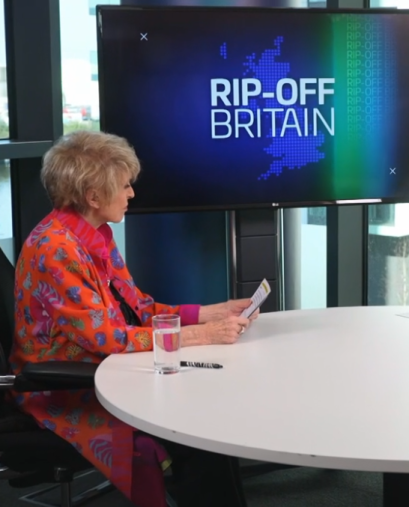DAC6 – A Partial Reprieve

by Annette Beresford CTA
A partial reprieve from DAC6 at the eleventh hour, following the conclusion of the Free Trade Agreement (FTA) between the UK and the EU
For the best part of two years, law firms and other intermediaries have been considering their obligations under EU Council Directive 2018/822, referred to as “DAC6”, which came into force on 25 June 2018. DAC6 requires each EU member state to implement certain disclosure obligations for intermediaries (such as law firms and accountants etc.). These require intermediaries to disclose cross-border arrangements with certain ‘hallmarks’ (split into categories A to E) to the tax authorities of their respective jurisdictions, for subsequent sharing between relevant jurisdictions. While the aim of DAC6 is stated to “tackle aggressive tax planning”, the disclosure obligations are widely drafted and expected to catch many cross-border commercial arrangements without any tax avoidance purpose.
EU member states were required (by the end of 2020) to implement DAC6 with retrospective effect from 25 June 2018 (the date on which the Directive entered into force). This means that intermediaries are required to look back at any matters they have been involved in since that date.
The UK implemented DAC6 into UK law last year by passing the International Tax Enforcement (Disclosable Arrangements) Regulations 2020 (the “Regulations”). Right until the end of 2020 the stated position of the UK government was that DAC6 would be implemented in the UK in full, despite the UK having left the EU as a result of Brexit.
The initial reporting deadlines for UK intermediaries (delayed by six months due to the COVID-19 pandemic), are as follows:
- For reportable cross-border arrangements where the first step in their implementation took place between 25 June 2018 and 30 June 2020, reports must be made by 28 February 2021.
- For reportable cross-border arrangements made available, or ready, for implementation, or where the first step in the implementation took place between 1 July and 31 December 2020, reports must be made by 30 January 2021.
Needless to say, a lot of time and effort has been spent by intermediaries preparing for DAC6 reporting. This involved setting up new onboarding procedures, to evaluate the DAC6 disclosure risk at the start of a new engagement, as well as looking back at historic matters to determine whether a disclosure would need to be made. HMRC also published detailed guidance on the proposed operation of DAC6 in the UK and the various hallmarks for disclosure.
Partial repeal of the legislation implementing DAC6 in the UK
The position taken by the UK with regard to implementing DAC6 unexpectedly changed following the conclusion of the FTA between the UK and the EU shortly before the expiry of the Brexit transitional period at the end of December 2020.
On 31 December 2020 HMRC issued an announcement that DAC6 would not be implemented in the UK in full after all. Under the terms of the FTA, the UK would instead operate a regime for disclosing cross-border arrangements in line with the (considerably less onerous) OECD’s model Mandatory Disclosure Rules (MDR).
For UK intermediaries, this change meant that the scope of their DAC6 disclosure obligations would reduce significantly. In line with the OECD’s MDR, only the category D hallmarks will be relevant for determining DAC6 reporting obligations in the UK (and the Regulations have been amended to reflect this).
The category D hallmarks are the following:
D(1): undermining reporting obligations
Broadly, arrangements will be caught under hallmark D(1) if they have the effect of undermining the various regimes and agreements that are in place for the automatic exchange of information between different jurisdiction (such as the Common Reporting Standard).
D(2): obscuring beneficial ownership
Broadly, arrangements will be caught under hallmark D(2) if they have the effect of obscuring beneficial ownership, e.g. to prevent beneficial owners being identified by any relevant tax authority.
Helpful HMRC guidance on both D hallmarks is available here: https://www.gov.uk/hmrc-internal-manuals/international-exchange-of-information/ieim645000
DAC6 disclosure obligations for intermediaries that are law firms and relevance of category D hallmarks
Disclosure obligations (where they arise) fall onto the relevant intermediary in the first instance. The relevant intermediary will normally be the firm acting for the relevant taxpayer (as opposed to individuals working at the firm). However, some individual will also need to be careful: while employees are specifically exempted from disclosure obligations under DAC6, partners or consultants are not (and could thus be obliged to disclose if the firm fails to discharge its obligations).
Where the relevant intermediary is a law firm, disclosure obligations under DAC6 are subject to legal professional privilege – where the firm could not disclose without being in breach of legal professional privilege (and the relevant client does not authorise disclosure), the disclosure obligation instead passes to the relevant client (who will need to be advised of this).
Intermediaries are either “promoters” or “service providers”. A promoter is an intermediary who designs, markets, organises, makes available for implementation or manages the implementation of a reportable cross border arrangement. HMRC expect that a promoter will almost invariably have a full understanding of the material aspects of the relevant arrangement.
A service provider is an intermediary who undertakes to provide aid, assistance or advice (directly or by means of other persons) in relation to the designing, marketing, organising, making available for implementation or managing the implementation of a reportable cross-border arrangement. Aid, assistance or advice could include providing finance, expertise or knowledge, sharing experience or offering accounting advice. A service provider’s disclosure obligations are restricted to what the service provider can be reasonably expected to know. HMRC guidance suggests that service providers are not generally required to carry out any ‘extra’ due diligence, but also that they cannot willfully ignore / close their eyes to relevant information available to them.
While it is difficult to be definitive based on the legislation and current HMRC guidance, it is generally expected that law firms are more likely to act as “service providers” than as “promoters”.
Looking at the category D hallmarks, we would consider it unusual for mainstream law firms knowingly to act on a matter that is. designed to undermine reporting obligations or to obscure a client’s beneficial ownership. In that regard, it should also be noted that a new client’s beneficial ownership has to established in any event as part of compulsory anti-money laundering checks. For those reasons, we would expect that, following the repeal of hallmarks A-C and E in the UK, a DAC6 disclosure by a UK law firm will be relatively rare.
Further development expected for 2021
As per the HMRC announcement of 31 December 2020, the government intends to repeal the legislation implementing DAC6 in the UK and instead implement the OECD’s MDR as soon as practicable later this year, in order to transition to international, rather than EU standards on tax transparency. The government intends to consult on the draft legislation for this in due course. HMRC also plans to revise its DAC6 guidance to reflect the changes.
Things to look out for
The partial repeal of DAC6 in the UK does not mean that UK intermediaries can simply forget about DAC6. It is still important to look out for anything unusual when acting on cross-border matters, and also to bear in mind that the EU jurisdictions are still required to implement DAC6 in full.
DAC6 generally envisages that intermediaries (such as law firms) are governed by the DAC6 rules in the jurisdiction where they are established or regulated and should thus disclose (where necessary) in only in those jurisdictions. This leaves some uncertainties for dual qualified lawyers who are individually registered with regulatory body of an EU member state (in addition to practicing in the UK.) and could therefore be obliged to make a disclosure in such EU member state (even where none is required in the UK).
In addition, implementation of DAC6 may not be uniform across the EU, with some jurisdictions ending up with stricter rules than others. For example, Poland is known to have implemented DAC6 a year early and with more onerous obligations than required by the EU Directive (potentially even bringing intermediaries established outside Poland within the scope of disclosure obligations in Poland). Which means that particular care must be taken when acting on a cross-border matter involving Poland. Further, there could be other jurisdictions (of which we are not currently aware) where DAC6 has been implemented with more extensive disclosure obligations than is required by the Directive.
Where a UK intermediary has to make a DAC6 disclosure to HMRC, it needs to go through a number of registration and other formalities with HMRC, which would likely be a time intensive exercise. Further, a first disclosure also triggers an obligation to make periodic follow-up disclosures. Accordingly, it will generally be preferable for intermediaries not to get into a position where a disclosure under DAC6 (or any successor regime) is required in the first place.
Photo by Christian Lue on Unsplash
If you have any questions with regard to any of the matters discussed in this paper, please contact our Tax Team.
Please note this paper is intended to provide general information and knowledge about legal developments and topics which may be of interest to readers. It is not a comprehensive analysis of law nor does it provide specific legal advice. Advice on the specific circumstances of a matter should be sought.








